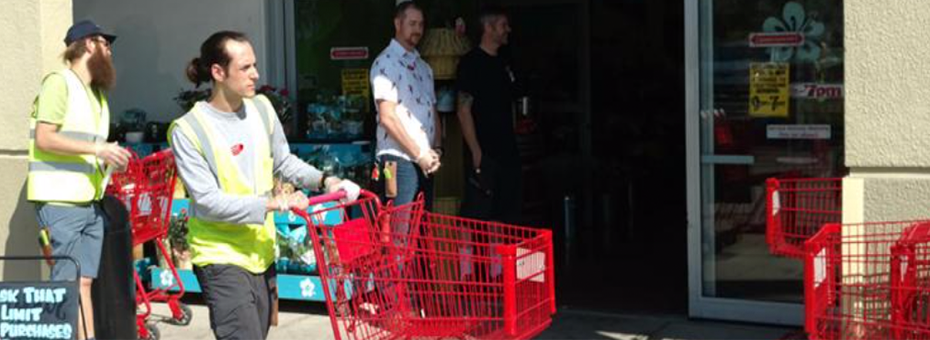LEI Faculty Member Steve Bell sent me a photo taken at a Trader Joe’s store in Oregon. With eyes for lean thinking and practice, he made several observations of how they’re operating as an essential business during the COVID-19 pandemic.
In the photo, workers are shown outside the store sanitizing shopping carts between users. He reported a similar “changeover” process inside at the checkout. Moreover, Steve observed them allowing only twenty-five shoppers at a time who were asked to limit purchases to two per item. He claimed the simple level-loading was creating greater flow throughout the store.
For obvious reasons given the pandemic, Steve and the rest of us want to get in and out of any store as quickly as possible. In his example, the flow that resulted from level-loading shoppers and basket size enabled that to happen.
Worldwide, we’re experiencing the mother of all abnormal situations. Abnormalities require a response. The WORK must change. Sometimes, like when an Andon signal notifies others of a problem, the response is planful. Other times, not so much. Regardless, as businesses like Trader Joe’s tackle the challenge of operating during a pandemic, let’s keep asking, “What can we learn for a post-COVID-19 world?”
Safety First, Quality Next, and Finally, Speed!
Trader Joe’s is a company featured in MIT Professor Zeynep Ton’s book The Good Jobs Strategy as a retailer that pays and operates well. Given this reputation and Steve’s observations, let’s break down what he observed, considering how their current approach is impacting their customers and workers alike.
Before shopping begins, workers signal to customers that safety is paramount. Sanitized carts for shoppers create safer working conditions too. Although the ongoing use of sanitizer can cause skin reactions, it’s far preferable to a coronavirus infection. Seeing such sanitary practices at the entrance and at checkout can also reassure customers that it’s happening elsewhere, such as where ordering, receiving, and stocking take place.
Trader Joe’s stores are relatively small, quite unlike the sprawling stores that many of their competitors build. Aisles are tight, making it hard for people to maintain the recommended six feet of separation while in the store. By limiting the number of shoppers at any given time, proper social distancing is made possible.
What is quality for a grocery store customer? For starters, it’s fresh and flavorful food. Grocery store workers contribute to that by upholding first-in-first-out (FIFO) product flow and discarding rotten and expired food. They also keep the shelves stocked and everything tidy and organized. Level-loading the shopper flow can make all of this easier to achieve than with typical, highly fluctuating retail conditions. (Note: To adequately address stock-outs, frequent deliveries would be beneficial too.)
For obvious reasons given the pandemic, Steve and the rest of us want to get in and out of any store as quickly as possible. In his example, the flow that resulted from level-loading shoppers and basket size enabled that to happen. (By the way, Trader Joe’s limited product offerings and small stores helps too.)
The flow Steve appreciated was achieved because of reduced traffic and shorter checkout times. And possibly, other reasons too, like better matching consumption rates (i.e., shoppers picking products off the shelves) with replenishment rates (i.e., workers restocking the shelves). Such matching enables flow for the workers and better stocked shelves. The timing and method of replenishment routes, including those between a warehouse and the store, can be synced with more predictable shopping patterns. Whether this is happening at Trader Joe’s intentionally or not, I do not know.
What About Later?
During this pandemic, Trader Joe’s is demonstrating several hallmarks of lean thinking:
- First, how to operate with an elevated consciousness for safety.
- Second, the advantages of a “right-sized” store footprint, i.e. layout, relative to demand (albeit artificial demand in this case).
- And third, the flow and routine work that’s achievable when an operation is level-loaded. (My colleague Karen Gaudet talks about this too in her book Steady Work.)
As Steve has shown us, now’s a good time to look for and to create other examples of applied lean thinking as everyone’s responding to the coronavirus abnormality. Not only is it good practice for lean thinkers, but it can also lay a solid foundation for a safer world with better products, services, and experiences when this awful pandemic is over. I’m curious, what examples do you have to share?






